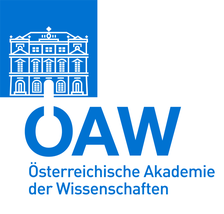“Why Do We Have To Help Foreign Children, Don’t We Have Enough Poor Children In Our Own Country?”*
Successes and Challenges in Post World War I Relief Activities in Austria and Central Europe
Symposium to be held at the Austrian Academy of Sciences in Vienna, September 26-27, 2019
jointly organized by the Austrian Academy of Sciences, the American Austrian Foundation and the Austrian Marshall Plan Foundation
Call for Papers
In the spring of 1919, the American Relief Administration under the leadership of Herbert Hoover started to feed Austrian schoolchildren, a program that continued until 1922 and supplied at its peak more than 300.000 lunches a day. Together with further American as well as other international programs, this project brought major relief to a country starved after four years of war and its aftermath. Child mortality had increased by 60% from prewar levels and in 1919 78% of all Austrian children were considered malnourished by teams of international physicians.
While the post-World War II activities like the Marshall Plan and the CARE initiatives are deeply rooted in the Austrian and European collective memories, the relief activities in the years after 1918, highly successful in their time and widely popular, are basically forgotten today, overshadowed by the economic and political crises of the 1930s, the following war, and the American efforts in the years after 1945. Who knows today about the school lunches, or that the CARE package system had a predecessor, bringing more than 160,000 food packages to Austria alone in 1920 and 1921? Or that tens of thousands of children were sent to countries all over Europe, from Sweden to the Netherlands, from Denmark to Switzerland, Yugoslavia or Romania and Spain for weeks and months, where they staid with families to live a „normal“ life in a safe environment.
The organizers want to commemorate these activities in a conference in Vienna and ask for contributions on topics related to the relief efforts after World War I in Austria and in international comparison. Papers comparing the situation after 1918 and after 1945 are especially welcome.
Contributions are invited to the following and other related fields:
– the work of the American Relief Administration in Austria, Central Europe and the Soviet Union
– the scientific background of the child feeding program (Nem, Pelidisi, Sacratama)
– the work of other relief organizations and private charity in Austria (Red Cross, Quaker, Jewish Joint Distribution Committee, Commonwealth Fund, Rockefeller Foundation and others)
– children transports from Austria to European countries
– similarities and differences between the international & private aid programs after WW I and WW II
– the importance of past WW I aid programs for the conception and implementation of past WW II aid programs (e.g. Care, Marshall Plan)
Length for Presentations: 20 minutes.
Deadline for Proposals: 25 April 2019.
Notification about acceptance of papers: May 15, 2019
All submissions will be reviewed for possible inclusion in the Symposium’s final report
Please send an abstract, not exceeding 400 words, and a short CV to:
Franz Adlgasser, Austrian Academy of Sciences, Institute for Modern and Contemporary History
franz.adlgasser@oeaw.ac.at
* as quoted 1919 in a major European newspaper in the context of aid for Austrian children



